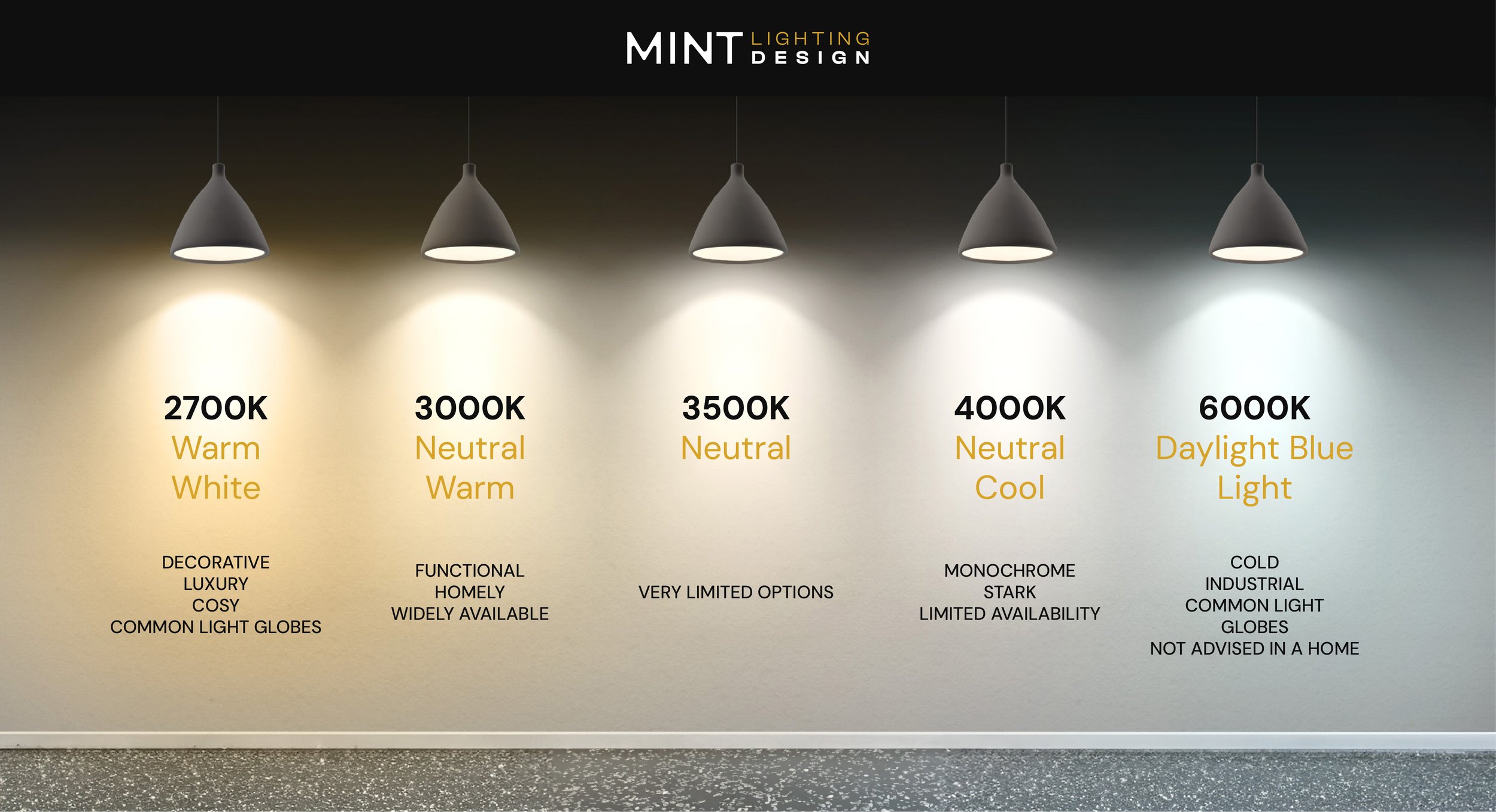The DIFFERENCE Between WARM And COOL Light...
Getting your head around what colour means in light can be tricky. It's even more confusing with LED lighting than any previous technologies because the choices now are so diverse! Unfortunately, even though there is plenty of good information available, it can be difficult to work out who's telling the right story. Sadly, there are still some people (who are experts in their field), making blanket comments about the quality of light from energy efficient LEDs based on poor colour selection. This can be very off putting when you're trying to figure out what the right light is for you.
In our homes, we really only need to understand the difference between warm and cool light. Many people have a perception that warm light can look "dirty" and changes the colour of a room, however good quality 3000K light (or warm white, sometimes called “soft white”), has a barely perceptible impact on the colour in a room. Yes, it's warm - but in the same way that you choose a slightly warm white paint for your walls so that your home feels cosy. It is also the colour of light everyone with Halogen lights has been living with for decades.
Cool White should describe 4000K – which is a clear white, that is slightly cool - however, recently on a trip to Bunnings, I saw that the standard colour temperature of 6000K being sold as Cool - which is a really blue light, and way too stark for most homes feeling clinical and uninviting. However, cool white light is often considered normal (even preferable) in warmer climates, where coming in from a hot humid day to a home that makes you feel like you're in a fridge can actually work as a positive! It is also common in countries that have mostly fluorescent light sources as the norm in homes.
Ultimately it comes down to personal choice, and where your light matters to you most. Of the 1000+ lighting designs completed at MINT, the majority of our lighting designs have been 3000K, some have been designed at 2700K and a handful at 4000K. There are many factors involved in making the right decision around colour – however – if you are unsure, we strongly recommend you select 3000K as it’s the most neutral choice.
It's also important when considering the colour of the light in your home that you get uniformity across the different light fittings. With LED, warm white can cover anything from 2200K to 3200K. 2200K is a much yellower tone and will cause the room to feel golden. Some enjoy this as it's more like traditional incandescent light, others can't stand it! - that's going to be a personal choice. Regardless of what warm white you choose, you want to ensure they are all the same K (Kelvin) rating, so you feel warm and welcome at home without really perceiving the colour. If it’s all the same colour, your vision accommodates, and it simply becomes “white”.
You can see in the image below that two colour temperatures have been used next to each other - sometimes this is done intentionally for drama, but often it's simply an error in selection and can make a space feel a bit messy.
The quality of the colour of your light is measured with a number called an "SDCM". Quality manufacturers will use this number to inform you of the consistency of the colour and their fittings will always have this information. As a guide, that number should always be 3 or below - and the lower the number, the less likely you are to perceive the difference between two fittings.
With modern photography enhancements, it can be really tricky to tell from images exactly what's going on with the colour of the light - but you will always FEEL the difference in your home. These images are of 2 types of 3000K light, with a feature of 2200K in the central pendant. Without having the white balance set on a camera phone, it looks like a little light white fruit salad – however, when you are in the space it all blends perfectly.
So - when choosing lights at home, don't be scared of LED - it's great for energy efficiency, and good quality LED lights have amazing colour - better than any technology that has come before.
If you're in cooler climates, you'll always want 3000K warm white, if you love the old incandescent light, you'll likely want 2700K. There are many lights coming into the market now that are "warm dimming" which means they behave like halogen light - 3000K at full brightness, and down to 2500K as they dim, which is a great way to replicate traditional lighting effects.
If you're in Far North Queensland, or a hot humid climate, you may prefer 4000K cool white light in your home to make it feel fresh and cold in the hot weather, but we strongly advise against going all the way to 6000K as it creates an environment that feels very extreme and hard to relax in. Most commercial spaces are lit with 4000k as it keeps you more alert and awake - great at work, but that is really not what you're looking for at the end of the day!
Please note, some images are sourced from third parties to highlight the principle being discussed, MINT Lighting does not claim ownership of these images and have simply chosen these as an example .







